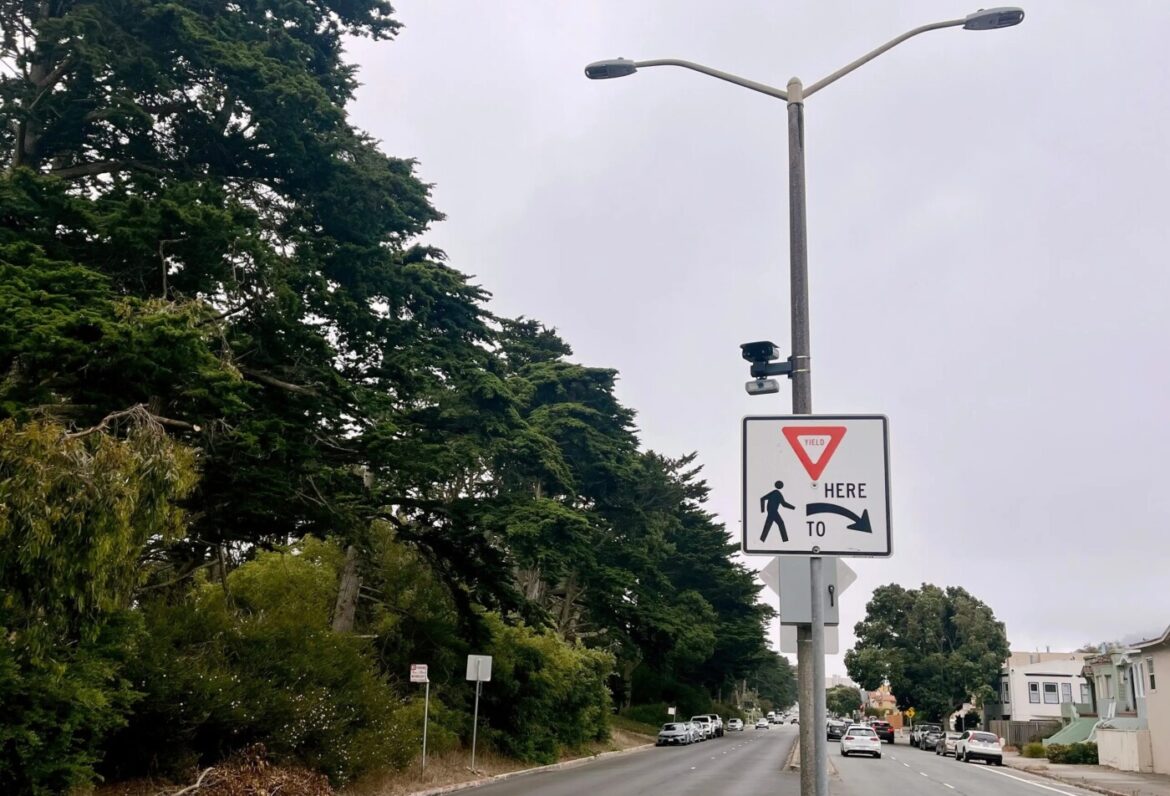THE FIRST AUTOMATIC SPEED CAMERAS in California will begin issuing citations in San Francisco next week.
After a 60-day warning period that began June 6, the San Francisco Municipal Transportation Agency will begin issuing civil speeding penalties using 33 cameras installed across all 11 city districts starting at 12:01 a.m. Tuesday.
Fines start at $50 for driving 11-15 mph over the speed limit and increase to $500 for any speed above 100 mph. Each citation goes through a series of human reviews to verify the vehicle’s plate number and ensure the ticket’s accuracy before being mailed to drivers, who can expect citations within two weeks of a violation, according to the SFMTA.
Low-income individuals and families are eligible for discounted fees, which they can access by completing SFMTA’s Income Verification Form after receiving a citation. Drivers also have the option to complete community service in lieu of payment.
“The program is about transparency and education. It’s not about catching people speeding [with] a ‘gotcha’ kind of attitude. We just want people to understand that speeding is not safe on our streets,” SFMTA director of streets Viktoriya Wise said.
On Oct. 13, 2023, Gov. Gavin Newsom signed Assembly Bill 645, which authorized five-year automatic speed enforcement pilot programs in six California cities — San Francisco, Los Angeles, Oakland, San Jose, Glendale, and Long Beach — in school zones and areas with high crash rates or documented cases of speed racing.
San Francisco’s first group of 13 speed cameras was activated on March 20, with the remaining 20 activated on a rolling basis thereafter. By June 6, all 33 cameras were in operation and the city was issuing warnings to speeding drivers, marking the beginning of the 60-day period before citations and fines would be administered.

SFMTA data suggests that the presence of the speed cameras alone was already enough to slow San Francisco drivers down. After recording over 250 daily speeding events on average per camera location in the first week of full activation, those daily numbers had decreased by 31% six weeks later. Additionally, 70% of vehicles that received a warning during the trial period did not speed past a camera again.
In addition to an 18-month evaluation anticipated in September 2026, SFMTA plans to place larger speed limit signs and additional markers leading up to the automatic speed enforcement zones where the most violations occur.
“Speed safety cameras are just one component of making sure our streets are safe. There are many different tools that we have at SFMTA, [like] street engineering tools that we have been implementing for a long time,” Wise said.
Revenue from automatic speed enforcement citations will go toward program recovery costs, with excess revenue expected to fund traffic calming measures. The SFMTA is required by law to provide any additional revenue not allocated to traffic calming to the state’s Active Transportation Program, which encourages Californians to use low-impact transportation options like walking and biking.
Critics question equity, oversight
While city officials began developing the program shortly after the bill’s passage, it faced criticism during the legislative process. In a letter to the California Senate Appropriations Committee, advocacy group Human Rights Watch opposed AB 645 months before it became law, raising concerns that automated speed enforcement could disproportionately affect low-income and minority communities and limit due process protections.
“Implementation of AB 645 risks the same results as those found in Chicago, where between 2015 and 2019, speed cameras ticketed households in majority Black and Latinx ZIP codes at two times the rate of majority white ZIP codes,” the letter read.
The group argued that the placement of speed cameras is often concentrated in areas with higher rates of crashes, which tend to overlap with historically underserved neighborhoods.
Forty-two people were killed in traffic crashes on San Francisco streets in 2024, the highest total since 2007, with speeding cited as the leading cause of those crashes, according to the advocacy group Walk San Francisco.
The post San Francisco speed cameras to begin issuing citations following 60-day warning period appeared first on Local News Matters.
